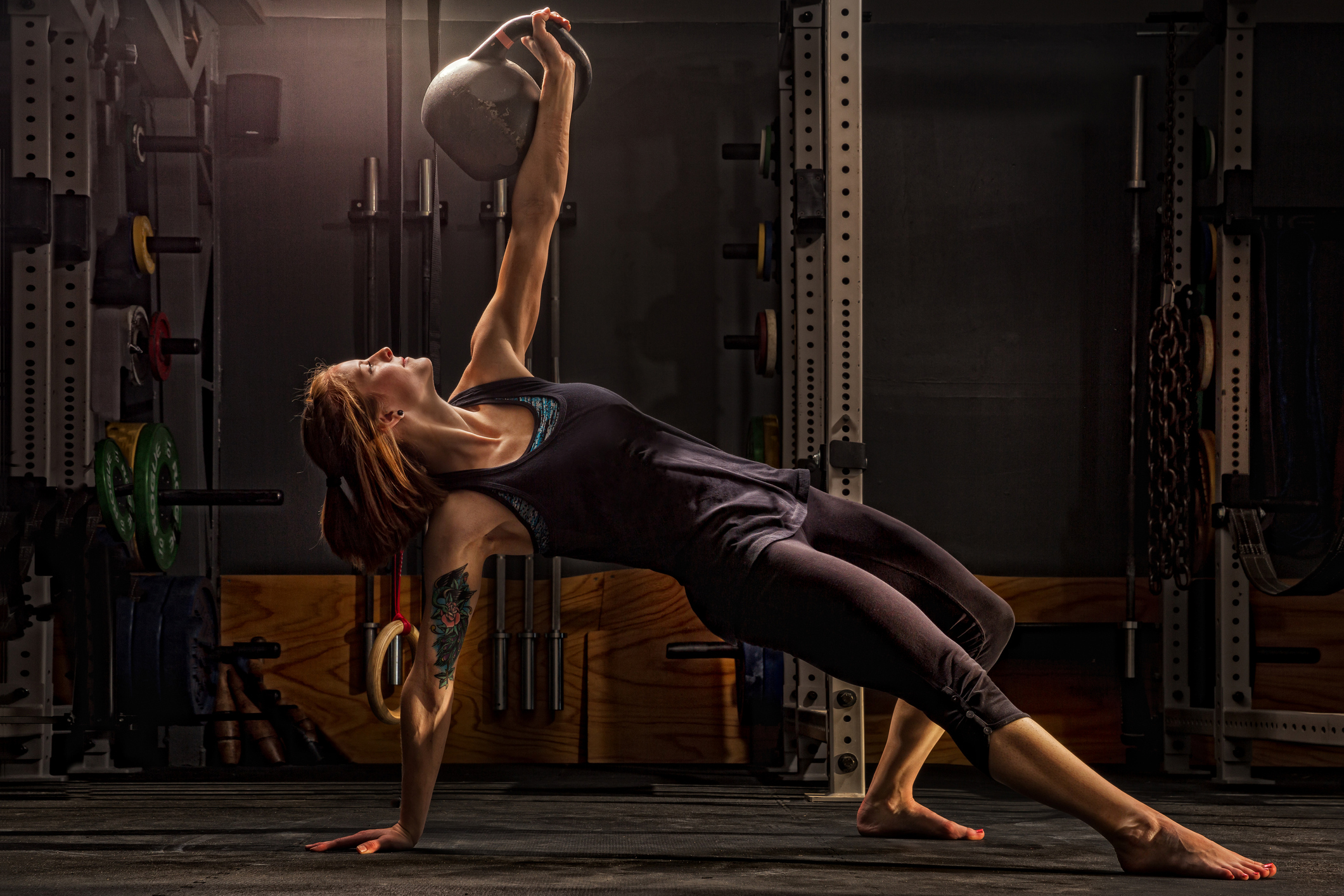This kettlebell move will help you get lean, toned and shredded all over
The kettlebell get-up is a great move to develop total-body muscle and mind-muscle connection


The best kettlebell is a deceptively simple, versatile tool. At its core, it's a big lump of metal with a handle on it. But it can be an incredibly versatile fitness tool: with it, you are able to train your legs, arms, core, shoulders and glutes. But there's one move that can do all of them at once.
The kettlebell get-up, once called the Turkish get-up, is a potent tool in your fitness arsenal. It encourages total-body muscle, helps develop excellent mobility, and even trains your brain. It's the ultimate anti-ageing safeguard for intermediate-to-advanced exercisers.
Never done one before? Watch the video and follow the instructions below, then keep reading for an explanation on why the kettlebell get-up is so, so good.
Learn how to perform the kettlebell get-up here:
- Lie on your back, with your left hand flat on the floor and your right hand holding a kettlebell straight up in the air.
- While keeping the kettlebell upright, drive your left arm into the ground and place your hand flat on the floor. Place your right foot flat on the ground and push your upper-body into a sitting position.
- Lift your hips upward, so your are supporting yourself on both feet and your left hand. Swivel your left knee back into a kneeling position.
- Keeping the kettlebell upright with a straight arm, stand up. Go back down and switch arms.
Why is the kettlebell get-up so good?
Moves that hit lots of different muscle groups, like squats, deadlifts and the bench press, are classified as "compound" movements, whereas exercises such as bicep curls, which only hit one particular muscle group at a time are called "isolation" exercises. The kettlebell get-up is an amazing compound movement, working your upper body, core muscles and lower body simultaneously.
Because it's a very challenging move, you're going to want to start off with a very low weight, if you use any at all. if you only have the best adjustable dumbbells instead of a kettlebell, that's totally fine - you can use dumbbells here. Either way, because it taxes muscles all over your body, doing this move repeatedly will really make you sweat, and your whole body demands more oxygen.
This combination of working hard, burning calories and developing all-over muscle makes it a great way to get shredded and stronger. A study by researchers from George Mason University found "the TGU (Turkish Get-Up) is included in training programs because of its versatility, the challenge it presents to maintenance of stability, and the demand that it imposes for development of strength throughout the entire body.
"The TGU can serve as a corrective exercise, a movement screen, or a conditioning workout."
Start your week with achievable workout ideas, health tips and wellbeing advice in your inbox.

It encourages movement, training our muscles in a way they aren't normally trained, which encourages them to grow. It also improves hip and shoulder mobility, and the muscles in the joints must be both limber and strong to maintain good form and keep the weight steady. It trains all the muscles we need to get up off the floor – it sounds silly, but these are the muscles that weaken first, increasing our risks of having an accident once we're elderly.
Finally, the get-up improves mind-muscle connection. it's not a simple move like a bicep curl: we have to really think about how our body moves in order to get the technique just right. The journal Brain Science found "the increase in cerebral blood volume in response to physical activity may be responsible for improving brain function".
Complicated tasks like the kettlebell get-up are similar to learning to dance, play Twister or perfect a golf swing – learning new physical skills improves our mind-muscle connection, keeping our brains healthy.
Matt Evans is an experienced health and fitness journalist and is currently Fitness and Wellbeing Editor at TechRadar, covering all things exercise and nutrition on Fit&Well's tech-focused sister site. Matt originally discovered exercise through martial arts: he holds a black belt in Karate and remains a keen runner, gym-goer, and infrequent yogi. His top fitness tip? Stretch.
